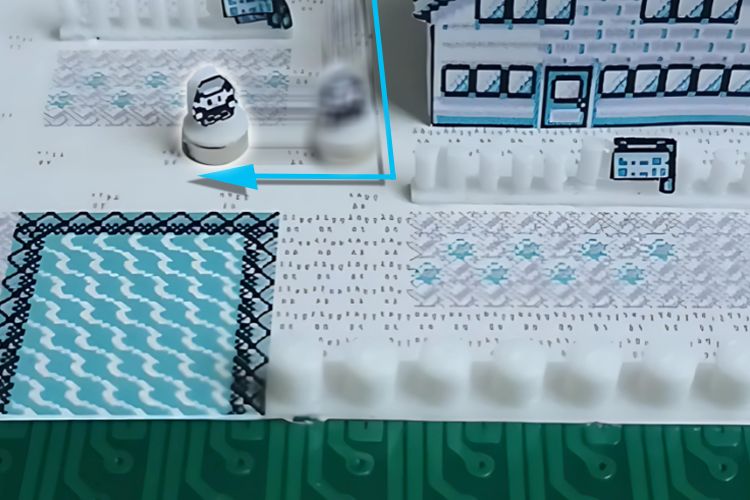
Recently, a Reddit user posted a new project where they created a Playable Pallet Town project , combining creativity and technical skill using a custom PCB and a magnet to bring the town to life. The project features a magnet that moves across 3D-printed buildings, controlled by electromagnetic coils built into the PCB, simulating movement within the scene.
Technical Breakdown
The core of this project is a specially designed PCB that uses electromagnetic induction to move a magnet. The PCB has two layers of coils: one for the x-axis (horizontal movement) and another for the y-axis (vertical movement). These coils are energized in sequence, creating a magnetic field that pulls the magnet along the surface. By controlling which coils are activated and in what order, the magnet can be moved in any direction.
The magnet follows the path created by the shifting magnetic field, giving the appearance of controlled movement across the landscape. This setup is similar to how linear motors or maglev systems operate, where magnetic fields are used to control the motion of objects.
Design and Functionality
In this demonstration, a picture of Pallet Town's landscape is glued onto the PCB, with additional 3D-printed buildings added to complete the scene. The buildings themselves are detailed with glued-on images, creating an accurate representation of the town.
As the coils activate, the magnet moves across the PCB, mimicking the motion of a character or object navigating through the town. This technique allows for precise control over the magnet’s position, making it a fun and interactive way to showcase electromagnetic principles in action.
Conclusion
This project cleverly uses PCB coils and electromagnetic control to move a magnet smoothly across the board, creating a visually engaging effect. Right now, the movement is a bit rough, similar to a chess piece sliding across a board, with each step corresponding to the size of the magnet. This indicates that there’s room for improving the resolution in future versions. Unfortunately, there aren’t many details available about how the project was made or its origins.

